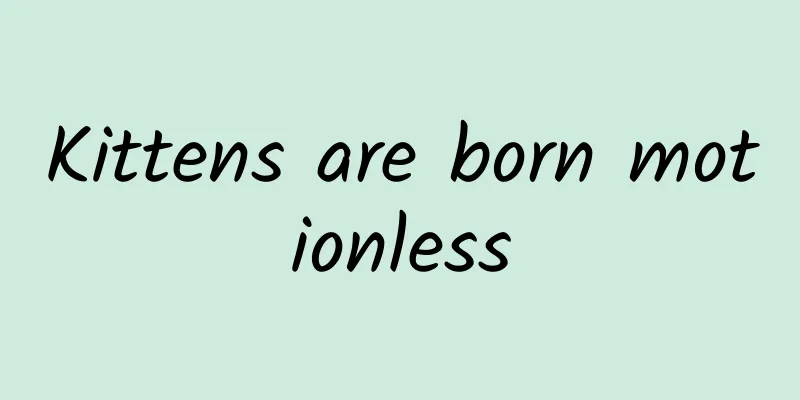CATDOLL : CATDOLL: What is the technology of beekeeping?

|
First acquaintance with bees Before beekeeping, let's first learn some knowledge about bees. At present, there are 7 million colonies of bees in my country, of which 90% are European bees imported from abroad, including Italian bees and Northeast black bees; and 10% are Chinese bees. Italian bees, referred to as Italian bees. They are widely raised in North China and Northeast China. The Italian queen bee has strong egg-laying ability and the worker bees have strong insect-rearing ability. They not only play an important role in production, but also are important breeding materials. Northeast black bees are an intermediate type of European black bees. They have strong reproductive ability and good wintering performance in cold areas. But they cannot maintain strong colonies in areas with low latitudes. Chinese bees are referred to as Chinese bees, which are suitable for living in Northeast my country, Northwest China, North China, East China, Southwest China and other regions. Chinese bees are agile in flight, sensitive in smell, hardworking, disease-resistant, cold-resistant and heat-resistant. But the honey production and the ability to secrete royal jelly are slightly lower than those of European bees. Through the above introduction, you can choose the appropriate breed and take corresponding breeding measures according to the specific conditions of each region. Bees are social insects. A group of bees usually consists of a queen bee, 1% drones, and 99% worker bees. The queen bee, drones, and worker bees each have their own specialties in the group, and they work together and depend on each other. The queen bee is the female bee in the bee colony. Under normal circumstances, there is only one queen bee in a group of bees. The queen bee's duty is to lay eggs. After the queen bee mates once, the sperm stored in the spermatheca can meet the needs of reproduction throughout her life. 2 to 3 days after mating, she starts laying eggs. A queen bee can lay 1,500 to 2,000 eggs a day and night. The queen bee lays two kinds of eggs, one is a fertilized egg, which can develop into a worker bee, and the other is an unfertilized egg, which can develop into a drone. The queen bee develops from the fertilized eggs in the queen bee cell. The queen bee cell is also called the royal cell. The eggs in the queen bee cell grow up eating royal jelly, so they develop into queen bees. Everyone knows that there can only be one queen bee in a group of bees. The queen bee can live for 3 to 5 years. In order to maintain a high egg-laying rate, a new queen bee is usually replaced once a year. There are several reasons why a new queen bee is produced in a bee colony: One is: the queen bee in the bee colony is lost or dies. (It takes about 16 days for a new queen bee to develop); Second, the bee colony is too large and needs to be divided. The third is: the old queen bee needs to be replaced. The work of breeding new queen bees is usually carried out in the fall (usually in the summer) to prepare for high production in the following year. When two queen bees appear in a bee colony, they will fight each other until only one queen bee is left. Worker bees are incompletely developed female bees in the bee colony. After the worker bee larvae hatch, they are fed royal jelly by adult worker bees for the first three days, and then they are fed a mixture of honey and pollen from the fourth day. Due to the change in nutritional conditions, the reproductive organs are inhibited and the ability to lay eggs is lost. The function of worker bees is to undertake all work inside and outside the hive. There are different divisions of labor with different ages. When they are just hatched out of the room, they are pale in color, cannot fly, and cannot take on other work. They are called young bees. Young bees aged 1 to 3 days begin to be responsible for the work of keeping the nest warm and cleaning the nest. Young bees aged 4 to 5 days are responsible for feeding large larvae. The royal jelly glands of worker bees aged 6 to 12 days are mature and are responsible for secreting royal jelly and feeding small larvae. The wax glands of worker bees aged 13 to 18 days are well developed and are responsible for secreting beeswax to build honeycombs, make honey, clean the nest, carry bee corpses, and defend the hive. After 18 days of age, worker bees are mainly responsible for collecting nectar, pollen, gum and water until they die. During the nectar flow period, worker bees can live for 30 to 45 days. In the wintering period in the north, they can live for about half a year. Unlike worker bees, drones have no instinct to work and specialize in mating with virgin queens. Most drones start flying at 7 to 10 days old and reach sexual maturity at 12 days old. Mating usually takes place between 1 and 5 pm on sunny days. They die shortly after mating. Although the life span of drones can reach 3 to 4 months, they have a large appetite and will be driven out of the nest and die of starvation and cold after the nectar season ends in late autumn. The development of each bee goes through four stages: egg, larva, pupa, and adult bee. After the queen bee lays the fertilized egg in the hive, within 6 hours, the worker bee will instinctively secrete some royal jelly around the egg. After 3 days, the egg membrane will rupture and the larvae will hatch. After the larvae hatch, they molt every 36 hours. After 4 molts, they become pupae after 6 days. After pupation, the larvae are inactive and do not eat, and only consume the nutrients stored in the body. After 11 to 12 days, they bite open the cover of the cell and crawl out of the hive to become young bees. The entire development process: queen bee takes 16 to 17 days; worker bees take 20 to 21 days; and drones take 22 to 24 days. Understanding the development cycle of bees can help us breed bees of appropriate age according to the local nectar plants to increase the yield of bee products. Next, let's take a look at the equipment needed to raise bees: beehives, which we often call honeycombs, are places where bees live, reproduce, and store food. The beehive consists of a large cover, straw curtains, covering cloth, sub-covers, honeycombs, partitions, and queen excluders. There are thousands of neatly arranged and interconnected hexagonal honeycombs on both sides of the honeycomb. The honeycomb is fixed on a wooden frame and is called a frame of honeycomb. According to the amount of honey, pollen, and larvae on the honeycomb, they are called honeycombs, pollen combs, and brood combs. According to the age of the day, the brood combs are divided into: egg combs, insect combs, capped combs, and empty combs. The distance between each honeycomb is called a bee path. The queen excluder is used to separate the insect breeding area and the honey storage area, which is conducive to the maturation and collection of honey and improves production efficiency. The beehive with 10 frames of honeycombs is the most widely used standard beehive. The hive can be expanded in time by stacking supers. We will introduce the method of adding supers to you later. After understanding the general situation of bees, you should also make the following preparations before starting beekeeping. Preparation for beekeeping Plants that can be used by bees to collect nectar and pollen are called nectar plants. Nectar is the basis of beekeeping production. Before determining the location for bee placement, it is necessary to investigate the types, areas, flowering periods, etc. of nectar plants. The main nectar plants that can collect a large amount of commercial honey are: rapeseed among oil crops, sweet clover and alfalfa among forage and green manure, jujube trees among fruit trees, locust trees among forests, and vitex among shrubs. Usually, a group of bees requires about 2 to 4 mu of nectar plants. It is also necessary to understand the flowering period of various nectar plants and the honey production of bees in previous years. The bee placement site should be selected within 2 km of the main nectar plants. The closer the apiary is to the nectar plants, the better. There should be clean water sources near the apiary, such as lakes, streams, canals, etc., to ensure that the bees can collect water and the beekeepers can use water for their daily lives. The apiary should be selected in a flat, dry, sunny, open southeast direction without obstacles. It is best to have a small hillside or a house or fence in the northwest. It is not suitable to release bees near tweeters, street lights, or insect traps. When purchasing bee colonies, you must choose the type of bee based on the local nectar source, climate and other conditions. In the plains of Northwest my country, North China and Northeast China, the summer is dry and there are large nectar sources with a long nectar flow period. Italian bees can be selected. In the mountainous areas of Northeast China, the winter is long and cold, the spring is short, and the main nectar source blooms early. You can choose the Northeast black bee with strong cold resistance. If the local area is located in the mountainous area and there is no concentrated large nectar source, you can choose the Chinese bee. The best time to buy bee colonies is in early spring, when the temperature rises and stabilizes, and when the nectar plants begin to bloom. Buying at this time is conducive to the reproduction of the bee colony and the effect is achieved in the same year. You can also buy in summer and autumn, but you should pay attention to at least one main nectar source in the same year. In this way, even if you cannot get a lot of commercial honey, at least you can ensure the feed reserves needed by the bee colony to survive the winter. Note that it is not advisable to buy bees after the annual nectar source ends. Because at this time, in addition to the purchase cost, you also need to buy sugar to feed the bees. The bee colony may die during the winter. When purchasing bee colonies, you should also pay attention to the quality of the colonies. The age of the queen bee should not exceed two years. If you buy bees in summer or autumn, it is best to choose a new queen of the year. A good quality queen bee has a large abdomen, a slightly pointed tail, four wings and six legs, and moves steadily. The egg-laying area is large and neat. Good quality worker bees are large and bright in color. When opening the box and taking out the comb, they do not crawl around and have a gentle temperament. The entire bee colony should be healthy and disease-free. The number of bees in the bee colony should not be less than 2 frames in early spring. In summer and autumn, it should be more than 5 frames, and there should be a certain number of brood combs. For example, a bee colony with 5 frames should have 3 to 4 frames of brood combs. Among them, the capped honeycombs should account for at least half. In addition, it should be noted that there must be 0.5~1 kg of feed honeycombs on each honeycomb. The honeycombs should not be too old. There should not be many drone cells on the honeycombs. After the bee colony is transported back, if the box is noisy, the box cover can be lifted, placed on the auxiliary cover for ventilation, and water can be sprayed on the nest door. If the site is spacious, the beehive can be arranged in a single box. It is required that the front row and the back row are staggered, with a distance of 2~3 meters between each row, and a distance of 1~2 meters between beehives, so as to facilitate bee nest recognition and personnel management. If the site is small, two boxes can also be arranged side by side. Two boxes in a group, 20 cm apart. When arranging beehives, the direction of the nest door is generally south, but it can also be east. Note that the nest door cannot face west, so as to avoid direct sunlight in the afternoon to the nest door, causing the nest temperature to be too high. Bee stings are a self-defense instinct of bees. If the management action is rough, or if you stand in front of the beehive, blocking the bees' path, or if the beekeeper has a strange smell on his body, bee stings will occur. Bee stings are harmless to humans. If you are stung accidentally, do not panic and slap your hands. Calmly scrape the stinger with your fingernails. Do not pull out the stinger with your hands to avoid more venom entering the skin. The stung part can be washed with water. Then apply a little ammonia or soapy water. Above, we have a preliminary understanding of bees and have made preparations for beekeeping. Next, let’s take a look at the daily management of the bee colony. Daily management of bee colonies Checking the bee colony can help us understand the changes in the colony so that we can take timely measures and make adjustments to create favorable living conditions for the bees. The inspection methods are divided into unboxing inspection and observation outside the box. When unboxing to inspect the bee colony, in order to avoid bee stings, you should wear light-colored clothing and a mask. People should face away from the sun. When opening the auxiliary box cover, first pry it gently with a scraper, and then push the auxiliary cover with your fingers to separate it from the propolis stuck to the box mouth. Turn the auxiliary cover over and lay it flat in front of the beehive. One end is placed on the nest door board to facilitate the bees on the auxiliary cover to crawl back into the nest. Use a scraper to gently move the partition and nest frame to separate the frame ears from the grooves of the box body. Use the thumbs and index fingers of both hands to pinch the frame ears at both ends and carefully lift the honeycomb vertically. Note that the honeycombs cannot rub against each other to avoid scratching the queen bee or angering the bees. There are two ways to check the honeycomb. One is to lift the honeycomb to the height of the eye, first look at the side facing, and then flip it with the beam on the honeycomb as the axis to look at the other side. Note that the honeycomb should always remain vertical to the ground when turning it over to prevent nectar and pollen from falling out of the cells. Another method is to first look at the side facing the line of sight, then lower the honeycomb, tilt the upper part of the honeycomb 45 degrees toward the line of sight, and look at the other side. When checking the honeycomb, it must be done above the hive, especially for double queen colonies. It is best to observe from the top of the side where the honeycomb is lifted to prevent the queen from falling and causing losses. Because the bees are crowded and not conducive to observation, when the honeycomb is halfway out of the hive, use the wrist force to quickly shake up and down a few times to shake off the bees by inertia. If there are many bees remaining on the honeycomb, use a soft bee broom to gently brush them away. Now that we have learned how to do an unpacking inspection, let’s take a look at what needs to be inspected. First, check whether the queen bee exists. Take out the honeycomb from the center of the bee colony. If you can't see the queen bee or the eggs, and the bees are crawling around and making a sound like flapping wings, this is a sign that the colony has lost its queen. If there are many eggs in the nest, and most of them are laid on the wall of the nest, it means that the queen has been lost for a long time and the worker bees have begun to lay eggs. Check it two or three times to confirm that there is no queen bee, and then put in a new queen. Otherwise, once two queen bees meet, both will suffer losses, causing losses to farmers. Second, check the queen bee's egg-laying situation. When the box cover is opened, the bees work in an orderly manner, and eggs can be seen on the combs, indicating that the queen bee is laying eggs. In a single-queen colony, the ratio of eggs, larvae, and capped combs should be 1:2:4. That is: one egg comb, two worm combs, four capped combs, and 1 to 2 frames of honey and pollen combs. If the egg-laying area on the brood comb is large, it indicates that the queen bee is laying eggs vigorously and the colony is normal. If the queen bee has a small chest and abdomen, darker color, limp, and missing wings, it indicates that this is a low-quality queen bee. If there are no eggs on the comb, but there are natural queen cells, the bees are slacking off, indicating that swarming will occur. If the brood comb area is small, the colony develops slower than other colonies, indicating that the queen bee has poor egg-laying ability or egg-laying is at a low ebb. Third, check the relationship between the bees and the honeycombs. When you open the sub-cover, if you find that the sub-cover, the outside of the partitions, and the side combs are full of bees, it means that there are more bees than honeycombs and you need to add more honeycombs. If there are few bees on the honeycombs and no bees on the partitions, it means that there are more honeycombs than bees. If there are many bees on the partitions and few bees on the honeycombs, it means that the temperature in the hive is high and the humidity is low, and the bees have left the honeycombs. Fourth, check the honey storage in the box. When you open the nest cover, you can smell the fragrance of honey and see the white beeswax honey cell cover on the top of each honeycomb. Lift the side honeycomb and it will feel heavy. This indicates that there is enough honey in the box. If the bees are uneasy or panic after opening the box, the honeycomb feels light when you lift it, and some bees fall off, it means that there is a lack of honey in the box. There is no disease, but the bees on the brood comb are not neat, indicating that there was a lack of honey. If the brood comb abandons the bees, it indicates that there is a serious lack of honey. After checking the honeycomb, it must be reinstalled in place. When reinstalling, pay attention to the bee path to be kept at 8 to 9 mm. Insert the partition. Gently shake the sub-cover up and down to urge the bees to leave the edge of the box. Finally, close the box cover. The unpacking inspection is generally done every 10 to 15 days. It is best to do it at noon in early spring and at 10 am and 4 pm in summer. |
<<: CATDOLL: How much can the Golden Cicada Cane package sell for?
>>: CATDOLL: What are mealworms and how to raise them?
Recommend
CATDOLL: Causes and treatments of skin ulcers in piglets
Causes and symptoms of piglet skin ulcers Piglets...
CATDOLL: Is sea urchin high in purine?
Is sea urchin high in purine? Sea urchin roe is t...
CATDOLL: The Chicken of Changtu - A closer look
The uniqueness of Changtu Chicken Changtu Chicken...
CATDOLL: Veterinary Feed Wholesale: All You Need to Know
Current status of veterinary drug and feed wholes...
How long do Turkish Angora cats usually live?
Turkish Angora cats can generally live to 10-15 y...
CATDOLL: What is the soil for raising earthworms called? (What is the soil for raising earthworms called?)
1. Can earthworms be raised in a mixture of half ...
CATDOLL: How come the alligator snapping turtle died after soaking in oxytetracycline for one day?
1. Why did the alligator snapping turtle die afte...
CATDOLL: Chengyang Changsheng Feed: Stable quality, the first choice recognized by the agricultural and animal husbandry industry
Chengyang Changsheng feed product quality assuran...
CATDOLL: What are the living habits of earthworms? (If you know, please let me know. Thanks!)
1. What are the living habits of earthworms? (If ...
CATDOLL: Where is the toxin in pufferfish located?
Although pufferfish is very delicious, it is toxi...
CATDOLL: Where is it suitable to breed Golden Edge Earthworms?
1. Where is the best place to breed Phnom Penh Ea...
CATDOLL: What kind of environment do loaches live in? Can they be farmed?
Loaches are freshwater fish. Most loaches live in...
CATDOLL: What are the benefits and benefits of raising bees? (What are the benefits and benefits of raising bees?)
1. What are the benefits of bees to humans? Answe...
CATDOLL: What harm does anemia do to people?
1. What harm does anemia do to people? Anemia is ...
CATDOLL: How to keep red worms alive at home (How to keep red worms alive quickly at home)
1. How to raise red worms at home? 1. Breeding en...









